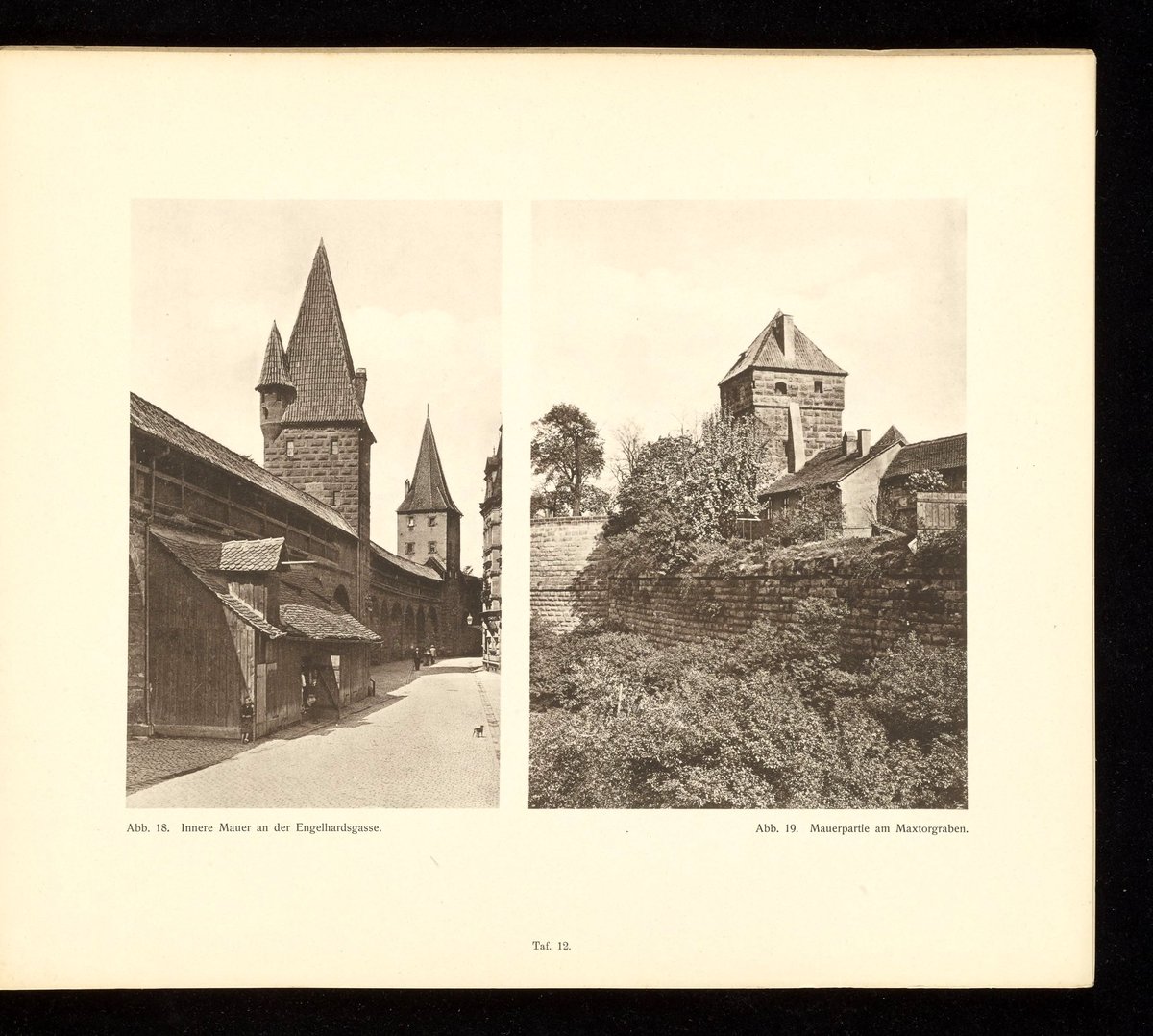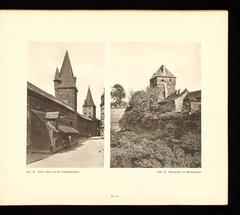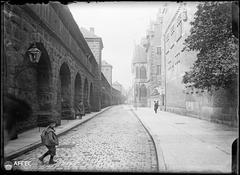
Nuremberg City Walls: Visiting Hours, Tickets, and Historical Sites Guide
Date: 14/06/2025
Introduction
The City Walls of Nuremberg are among Germany’s most remarkable and best-preserved medieval fortifications, offering a window into centuries of military strategy, urban development, and cultural life. Enclosing the historic Old Town (Altstadt), these walls have shaped the city’s identity from the 12th century to the present. With over 70 towers, monumental gates, and imposing bastions, the walls not only defended Nuremberg through turbulent periods—including the Thirty Years’ War and World War II—but today invite visitors to explore their architectural splendor and historical significance.
This guide provides comprehensive information for travelers: from the walls’ historical evolution and architectural features to visiting hours, ticketing, tours, and practical tips. Whether you are a history enthusiast, architecture lover, or first-time visitor, this guide will help you make the most of your journey along the Nuremberg City Walls (nuernberg.de; planetware.com; quartiere-nuernberg.de; touropia.com; baldhiker.com; tourismus.nuernberg.de; meticulousmeanderings.com).
Historical Development of the Nuremberg City Walls
Early Origins and Expansion
The earliest defenses of Nuremberg date from the 12th century, reflecting the city’s growing importance as a trading center and imperial stronghold. By the late 13th century, significant extensions incorporated towers like the Tiergärtnertorturm, Laufer Schlagturm, and Weißer Turm (nuernberg.de). By the 15th century, a formidable circuit encircled the Altstadt, forming a nearly 5-kilometer ring.
Renaissance Enhancements
The 16th-century advent of gunpowder prompted major upgrades: bastions were introduced, gate towers reinforced, and moat systems deepened to deter artillery. Italian architect Antonio Fazuni’s redesign in the 1500s made the walls almost impregnable, and their reputation as a defensive marvel endured for centuries (quartiere-nuernberg.de).
Wars and Resilience
During the Thirty Years’ War, the walls shielded thousands seeking refuge during sieges. Despite famine and disease within, the walls themselves endured. Their only breach came with American forces in 1945, following heavy World War II bombing (planetware.com).
Decline and Restoration
With new military technology and the city’s incorporation into Bavaria in 1806, the walls lost their defensive role. Industrial growth led to partial demolition in the 19th century, but significant sections survived—especially on the western and northern sides. Post-war efforts focused on restoration using original materials and techniques, safeguarding the walls as a heritage monument (nuernberg.de).
Architectural Features and Urban Integration
Layout and Materials
Nuremberg’s walls form a near-continuous ring, mostly built from local sandstone, with thickness up to 8 meters at the base and heights of 7–8 meters (planetware.com; touropia.com). The structure includes 71 towers, seven main gates, and a dry moat—now a green park—that once deterred attackers.
Notable Gates and Towers
- Frauentor: Distinctive for its massive gatehouse and access to the Old Town.
- Spittlertor: Features a bastion and preserved medieval mechanics.
- Laufer Tor and Tiergärtnertor: Key entry points with unique architectural details.
- Weißer Turm: Now integrated into a bustling urban setting (planetware.com).
Defensive Innovations
The walls’ zig-zag projections and bastions allowed for overlapping fields of fire. Underground casemates—accessible by guided tour—demonstrate sophisticated military engineering, with tunnels running up to 12 meters below ground (quartiere-nuernberg.de; Germany Things To Do).
Integration with Modern City Life
Today, the walls enclose the Altstadt and separate it from modern Nuremberg. Towers and gates have been repurposed as studios, homes, and museums. The moat is a green promenade, and the ramparts offer scenic walks. The walls are not just relics, but living landmarks intertwined with daily urban life (roamandthrive.com; TravelAwaits).
Visiting the Nuremberg City Walls: Hours, Tickets & Tips
Access Points and Navigation
- Starting Point: Directly across from Nuremberg Central Station (Hauptbahnhof) (baldhiker.com).
- Main Gates: Königstor, Frauentor, Tiergärtnertor, Spittlertor.
- Complete Circuit: About 5 km (3.1 miles); full city walk with detours: ~8 km (routeyou.com).
Visiting Hours
- Walls and Paths: Open 24/7 year-round, free of charge.
- Towers/Museums: Usually 10:00 AM–5:00 PM (some variation seasonally); check official sites for updates (tourismus.nuernberg.de).
- Imperial Castle (Kaiserburg): 9:00 AM–6:00 PM (Apr–Oct), 10:00 AM–4:00 PM (Nov–Mar).
Tickets
- Walking the Walls: Free.
- Museums/Towers/Underground Tours: €3–8 for adults; discounts for children, students, and seniors. Combination tickets and the NÜRNBERG CARD + FÜRTH offer further savings (tourismus.nuernberg.de).
Accessibility
Most wall paths are level and paved. Some towers and underground passages have stairs and uneven surfaces—check accessibility before visiting. The moat is now a park with benches, ideal for rest and picnics.
Guided Tours and Special Experiences
- General City Walls and Old Town Tours: Available in several languages.
- Military/Architectural History Tours: Explore defensive corridors, tunnels, and vaulted chambers.
- Specialty Tours: Art Bunker, medieval dungeons, and historic cellars (mygermanyvacation.com).
- Booking: Highly recommended in peak seasons; group tours and private guides available.
Best Times to Visit
- Spring to Autumn: Pleasant for walking and cycling.
- Winter: Festive atmosphere during the Christmas market.
- Morning/Evening: Fewer crowds and better lighting for photography.
Facilities and Amenities
- Restrooms and benches near major sites.
- Cafes and restaurants in the Old Town for refreshments and Franconian specialties.
- Bike rentals available; cyclists are welcome on wall paths, but share space with pedestrians.
Transportation
- By Train: Direct ICE connections from Munich, Berlin, and other major cities (baldhiker.com).
- Car: Parking outside the Old Town; private vehicles restricted within the walls.
- Public Transport: Central station adjacent to the walls.
Visitor Etiquette
Stay on marked paths, avoid climbing structures, and respect restoration areas. Photography is permitted, but drone use is generally restricted.
Notable Features and Hidden Corners
- Medieval Dungeons (Lochgefängnisse): Beneath the Town Hall, accessible by guided tour (planetware.com).
- Secret Passages: Explore with specialized tours (getyourguide.com).
- Panoramic Views: Fürther Tor and the stretch between Spittlertor and Maxtor are highly recommended for photos.
Frequently Asked Questions (FAQ)
Q: What are the visiting hours for the Nuremberg City Walls?
A: Outdoor sections are open 24/7 year-round. Museums and towers typically open 10:00 AM–5:00 PM.
Q: Is there an entrance fee?
A: Walking the walls is free. Tickets are required only for select museums, towers, and guided tours.
Q: Are guided tours available in English?
A: Yes, tours are available in English and other languages; advance booking is recommended.
Q: Are the walls family- and wheelchair-friendly?
A: Most paths are suitable for families. Some towers and underground tours may not be accessible for visitors with limited mobility.
Q: What’s the best way to reach the City Walls?
A: The Central Station is the main gateway; the walls are accessible on foot from there.
Summary and Visitor Tips
The City Walls of Nuremberg are a living monument—testament to the city’s medieval heritage, resilience, and cultural vitality. Their preservation, especially after World War II, is a model for urban heritage conservation worldwide. With year-round free access and a wealth of guided experiences, the walls are a must-visit for anyone exploring Nuremberg. Plan your route, check for special events, and take time to enjoy the city’s culinary and cultural offerings nearby.
For the most immersive experience, consider downloading the Audiala app for guided audio tours and up-to-date travel tips. Explore related articles on Nuremberg’s top attractions, and follow us on social media for the latest news and inspiration.
Sources
- nuernberg.de
- Nuremberg City Archives
- quartiere-nuernberg.de
- baldhiker.com
- tourismus.nuernberg.de
- planetware.com
- meticulousmeanderings.com
- touropia.com
- roamandthrive.com
- routeyou.com
- mygermanyvacation.com
- getyourguide.com

















































